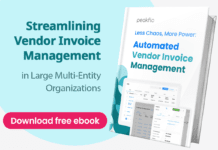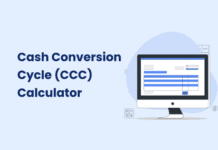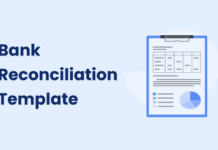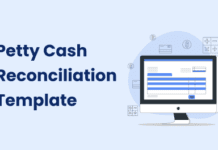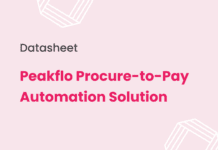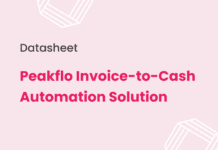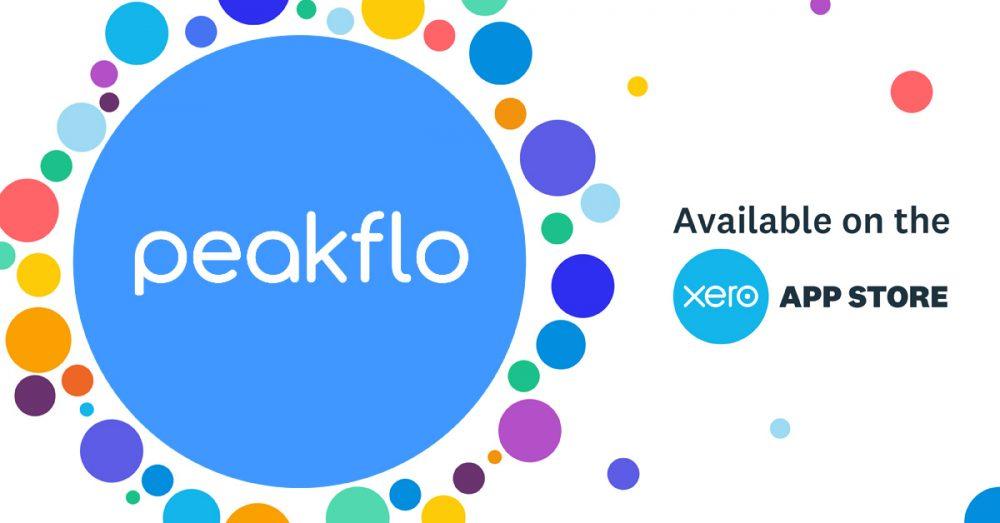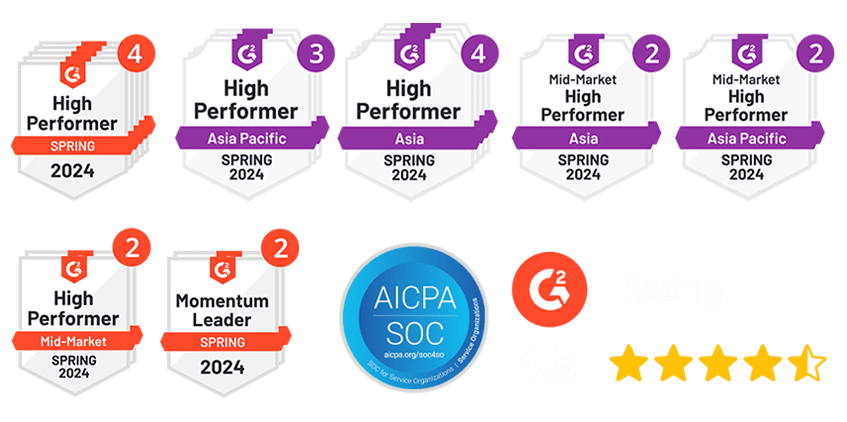Does your accounts payable (AP) team spend hours fixing mismatched invoices, chasing approvals, and handling payment disputes? Are late payments damaging your vendor relationships? If these struggles sound familiar, you are not alone.
Invoice matching is one of the most time-consuming tasks in AP. Manual matching leads to errors, duplicate payments, and missed early payment discounts. The bigger your company, the bigger the challenge. Without automation, your team is stuck in a cycle of frustration, slow approvals, and compliance risks.
This is where invoice matching software comes in. The right solution automates three-way matching, flags discrepancies instantly, and integrates with your ERP for seamless processing. But with so many options, how do you pick the best one?
In this guide, we will break down the 10 best invoice matching software solutions so you can find the perfect fit for your company. Read on to discover which one will save your team time, money, and endless headaches.
Understanding Invoice Matching Software
Every company dealing with hundreds or thousands of invoices has the same problem—making sure each invoice is correct before sending a payment. This process is called invoice matching. When done by hand, it can slow down accounts payable (AP) teams and cause costly mistakes.
AP staff must manually check every invoice against purchase orders and delivery receipts without automation. This means going through each line one by one, hoping that the numbers match. One small mistake—an extra charge or a missing item—can lead to overpayments, approval delays, and vendor disputes.
Let’s assume your company orders 5,000 office chairs from a vendor. The purchase order confirms the order, and the vendor sends an invoice for payment. But when the shipment arrives, only 4,800 chairs are delivered.
If your team reviews invoices manually, they might not catch the error right away. This could result in overpaying for 200 chairs that never arrived. However, with invoice matching software, the system flags the issue instantly. Your team sees the mistake before making the payment, preventing financial loss.
The invoice processing software market is growing fast. It is expected to jump from $33.59 billion in 2024 to $40.82 billion in 2025. North America is leading the way, while Asia-Pacific is the fastest-growing region.
How Invoice Matching Software Works?
Invoice matching software automates the entire process of checking invoices against purchase orders and delivery receipts. It makes sure everything in the invoice matches what was agreed upon. Here is how it works:
Step 1: Capturing the Invoice
The software first captures the invoice. It can do this by scanning paper invoices or pulling data from digital ones. Many tools use Optical Character Recognition (OCR), which turns text from scanned images into readable data.
Step 2: Extracting Key Information
Next, the software extracts important details from the invoice, like the vendor’s name, the invoice amount, date, and item details. It then compares this information with the purchase order and receipt already stored in your system.
Step 3: Matching the Data
The software then compares the data from the invoice with the purchase order and receipt. It checks prices, quantity, and total amount to ensure everything matches.
Step 4: Detecting Discrepancies
If there are any differences, the software flags them automatically. For example, if the invoice has a price or quantity different than the purchase order, the system will alert your team.
Step 5: Routing for Approval
Once the invoice is matched, it moves to the approval stage. The software sends it to the right person in your company for final approval. Many tools come with built-in workflow features to help with this step.
Step 6: Processing the Payment
Once approved, the invoice is sent to the payment system. The software then ensures that the payment is processed on time and accurately.
Key Features to Consider in Your Invoice Matching Software
Choosing the right invoice matching software is essential for improving the speed and accuracy of your accounts payable (AP) processes. With so many options available, how do you pick the best one? Here are the most important things to consider when making your decision:
1. Look for Automation
A good invoice matching software will save your team a lot of time by automating repetitive tasks. Make sure the software can:
- Automatically capture details from invoices
- Match invoices with purchase orders and receipts automatically.
- Flag errors or discrepancies, so you don’t have to manually search for them.
Automation is key to cutting down manual work and reducing the chances of making mistakes, like paying the wrong amount.
2. Integration with Your Current Systems
Your new software should connect easily with your existing tools, like your accounting software or ERP system. This will help avoid manual data entry and make everything run more smoothly. Choose invoice matching software that works with systems like QuickBooks, Xero, or SAP. Integration helps your team work more efficiently and reduces the risk of errors when transferring data.
3. Scalability for Growth
As your business grows, your needs will change. Make sure the invoice matching software you choose can grow with your business. This means:
- Handling more invoices as your transaction volume increases.
- Supporting more complex processes as your business expands.
Investing in scalable software now will save you the headache of switching systems down the line.
4. Customization and Flexibility
Every business is different. The best invoice matching software should be flexible enough to fit your unique needs. Look for a tool that allows you to:
- Create custom approval workflows.
- Define specific fields for invoice details.
- Personalize invoice templates for your business.
The more customizable the software, the better it can adapt to your processes and make things easier for your team.
5. Easy to Use
Even the best software won’t work well if it’s hard to use. A user-friendly interface is crucial for quick adoption by your team. Make sure the software has:
- A simple dashboard that’s easy to navigate.
- Helpful instructions and training materials for your team.
- Good customer support if you need assistance.
A tool that’s easy to use will help your team adopt it faster and get more out of it.
6. Reporting and Analytics
Having access to the right data is essential for making smarter decisions. Look for invoice matching software that offers strong reporting and analytics features. These tools can:
- Help you track spending trends and invoice processing times.
- Provide insights into how your business is managing its finances.
Good reporting helps you understand what’s working and what’s not, making it easier to improve your financial processes.
7. Security and Compliance
It’s crucial that the software keeps your financial data safe and complies with all necessary regulations. Check for features like:
- Audit trails that track every action on an invoice.
- Compliance with tax laws and accounting standards.
- Encryption to protect sensitive data from unauthorized access.
Security and compliance will help your business avoid penalties and keep your financial information safe.
8. Price and Support
Finally, consider the cost and the level of support provided. The software should fit within your budget while still meeting your needs. Look for options that offer:
- Affordable pricing plans for businesses of all sizes.
- Reliable customer support via chat, email, or phone.
- Training resources to help your team get up to speed quickly.
Great customer support can make a huge difference if you ever run into any issues, and a reasonable price means you get value for your investment.
Benefits of Using Invoice Matching Software
Are you still manually matching invoices with purchase orders and receipts? Imagine the time and effort you could save if you could automate this process. Let’s look at the real benefits of using invoice matching software and how it can help your business thrive.
1. Saves Time and Increases Efficiency
How much time does your team spend each month checking invoices? Invoice matching software automates repetitive tasks, so your team doesn’t have to manually check every detail. The result? Faster processing and more time for your team to focus on important tasks.
2. Reduces Errors and Overpayments
What happens when an invoice does not match? With traditional methods, errors slip through, leading to overpayments or missed payments. Invoice matching software automatically flags discrepancies, helping you avoid costly mistakes and ensuring accurate payments every time.
3. Boosts Compliance and Reduces Risks
Are you confident that your financial processes are fully compliant? Invoice matching software helps you stay on track with tax laws and company policies. With automatic audit trails and detailed records, it becomes easier to maintain compliance and reduce the risk of fraud or fines.
4. Improves Cash Flow Management
How well do you manage your business’s cash flow? By speeding up invoice approvals and payments, you can better control your finances. With real-time tracking and payment insights, invoice matching software helps you avoid cash flow problems and keeps your business running smoothly.
5. Enhances Vendor Relationships
Are late payments or invoice issues causing problems with your vendors? With automatic invoice matching, you’ll ensure on-time payments and avoid payment disputes. This helps build stronger, more reliable relationships with your vendors, making future transactions smoother.
6. Provides Real-Time Insights and Reporting
Would you like better visibility into your company’s spending? With invoice matching software, you get real-time insights into your financial data. Whether it is spending trends or invoice processing time, you can make informed decisions that improve your overall financial strategy.
Top 10 Invoice Matching Software for Automation
Choosing the best invoice matching software can help your finance team work faster and make fewer mistakes. Below, we will review the top 10 invoice matching software options, starting with Peakflo.
1. Peakflo
Peakflo is an AI-powered software that helps finance teams automatically handle invoices. It captures data from invoices, checks if everything matches, and organizes documents without much human work. Peakflo makes sure companies do not waste time on manual invoice checks and helps avoid mistakes that could cost money.
Top Features:
- AI-Powered Invoice Capture: Peakflo uses artificial intelligence (AI) to read invoices automatically. It collects important details, like vendor name, amount due, and line items, without anyone having to type it in. This saves your team hours every month by eliminating the need for manual data entry.
- Works in 41 Languages: Peakflo can read invoices in 41 different languages. This makes it perfect for businesses that work with vendors around the world.
- Three-Way Matching: Peakflo AI offers 98% matching accuracy. It automatically compares the invoice, purchase order, and delivery receipt. If something does not match, the system alerts your team right away, preventing overpayments or mistakes.
- Bank Account Verification: Peakflo also checks the bank account details on invoices. If a new account is listed, it compares it with existing records to make sure you are not paying the wrong account. This reduces mistakes and helps ensure payments go to the right place.
- Non-PO Invoice GL Coding: Instead of manually routing invoices for approvals and assigning GL codes to non-PO invoices, Peakflo automates the entire process. It intelligently assigns GL codes based on invoice and vendor data, reducing manual effort and errors.
- Custom Field Mapping: For businesses that need to capture specific data (like cost centers or subsidiary names), Peakflo automatically extracts and maps custom fields.
- AI-Powered Compliance Check: Peakflo’s AI checks contract details against invoices to ensure everything matches. This helps eliminate the need for manual checks and saves time. It also ensures everything is compliant, reducing errors.
- Global Payments: Peakflo supports payments in many currencies and countries, which makes it perfect for businesses that deal with international suppliers.
Pros:
- Saves Time: Automatically captures invoice data, saving 140 hours per month.
- Supports 41 Languages: Great for global teams working with vendors from different countries.
- Customizable: You can set it up to track specific fields like project codes or subsidiary names.
- Seamless Integration: It works well with all systems through Peakflo’s one-click ERP and API integrations.
2. Bill.com
Bill.com is a cloud platform that helps businesses manage their invoices and payments. It automates the entire process, saving time and reducing mistakes.
Top Features:
- Automatic Invoice Processing: Bill.com automatically reads and processes invoices, cutting down on mistakes and speeding up the process.
- Integration with Accounting Software: It works well with popular tools like QuickBooks, Xero, and NetSuite so that you can sync everything easily.
- Secure Payments: Bill.com offers safe ways to pay invoices, including ACH, virtual cards, and international payments.
- Custom Approval Workflows: You can set up rules so the right person reviews the invoice before payment.
- Document Storage: It keeps all your invoices and documents in one place, making them easy to find.
Pros:
- It makes complex billing simple.
- You can track cash flow and payments easily.
Cons:
- It may cost more than some other options.
- Customization for invoice templates is limited.
3. Zoho Invoice
Zoho Invoice is an online tool designed for small and medium businesses. It helps create and send invoices, track expenses, and manage time spent on projects.
Top Features:
- Custom Invoices: You can make invoices with your company logo and custom fields that fit your needs.
- Multi-Currency Support: If you work with clients from other countries, Zoho Invoice supports different currencies and updates exchange rates automatically.
- Track Time: You can log hours worked and turn them into invoices, so you’re paid fairly for your work.
- Expense Management: Keep track of expenses related to projects or clients for better financial control.
- Automatic Payment Reminders: You can set up automatic reminders to send to clients who haven’t paid yet.
Pros:
- Very easy to use, even for people with no accounting experience.
- Offers a free plan for small businesses with simple needs.
Cons:
- Doesn’t have as many advanced accounting features as other tools.
- The reporting features may not be enough for larger companies.
4. Xero
Xero is a popular cloud accounting software for small and medium businesses. It helps with invoicing, tracking expenses, and keeping financial records up to date.
Top Features:
- Easy Invoice Creation: Xero lets you create invoices quickly with customizable templates. You can even set up recurring invoices for regular clients.
- Bank Reconciliation: It imports your bank transactions automatically and matches them with your records, making it easier to track money.
- Expense Claims: Employees can submit expense reports, which can be reviewed and approved easily.
- Financial Reports: Xero gives you access to important financial reports like profit and loss statements to understand your business’s health.
- App Integrations: Xero works well with other business tools, so you can add extra features when needed.
Pros:
- The software is easy to navigate and use.
- Regular updates with new features based on user requests.
Cons:
- It can be expensive for small businesses.
- Some advanced features need additional add-ons, which can raise the cost.
5. Tipalti
Tipalti is a tool that helps large companies manage their invoices and payments. It makes the whole process faster and more accurate by automating everything.
Top Features:
- Automatic Invoice Matching: It automatically checks and matches invoices with purchase orders.
- Tax Compliance: Tipalti ensures everything follows tax laws by automating tax checks and forms.
- Supplier Management: It lets suppliers submit invoices and check their payment status.
Pros:
- Make sure everything follows tax rules.
- Offers approval workflow.
Cons:
- It may take time to set up if your company has complex needs.
- Some advanced features need more expensive plans.
6. SAP Concur
SAP Concur helps big companies manage invoices, expenses, and travel in one tool. It simplifies tasks and gives easy-to-understand reports.
Top Features:
- Invoice Automation: SAP Concur automatically reads and matches invoices, which speeds up the process.
- Expense Management: It tracks and approves employee expenses, making sure everything follows company rules.
- Mobile App: You can use the SAP Concur app to submit invoices, track expenses, and approve bills from anywhere.
- Reports and Analytics: The software gives detailed spending reports, helping businesses save money.
- Vendor Management: SAP Concur enables you to manage supplier details and keep track of supplier performance.
Pros:
- Helps manage both invoices and expenses in one place.
- The mobile app makes managing everything easy, even on the go.
Cons:
- It can be expensive for small businesses.
- Some users say it takes time to get used to the software.
7. Coupa
Coupa helps businesses manage their spending, invoices, and payments. Automating key tasks gives companies better control and visibility over their finances.
Top Features:
- Invoice Matching: Coupa automatically checks invoices and compares them to purchase orders to make sure everything is correct before payment.
- Spend Control: The software helps businesses track their spending in real-time and stay within budget.
- Real-Time Analytics: Coupa provides insights into how money is being spent, which helps businesses save money.
- Supplier Management: You can manage supplier details and track supplier performance easily with Coupa.
- Global Compliance: Coupa ensures businesses follow different countries’ tax rules and accounting standards.
Pros:
- Helps businesses keep track of spending in real-time.
- Provides reports to help companies to make better decisions.
Cons:
- It can be hard to use for small businesses.
- Setting up the system can take time, especially for large companies.
8. Sage Intacct
Sage Intacct is software that helps businesses handle their invoices and finances. It makes everything more organized and accurate by automating tasks.
Top Features:
- Invoice Matching: It automatically checks invoices against purchase orders and receipts, saving time and reducing mistakes.
- Financial Reports: Sage Intacct creates reports that help businesses see their financial health and find ways to save money.
- Supports Multiple Locations: It’s great for businesses with many locations or departments. It helps manage finances in different areas.
- Cloud-Based: You can access it from anywhere because it’s cloud-based.
- Works with Other Tools: It easily connects with other business software, so data is shared smoothly.
Pros:
- Helps companies to make better decisions with clear reports.
- Cloud-based for easy access.
Cons:
- Might be too expensive for small businesses.
- It can take some time to learn how to use it.
9. AvidXchange
AvidXchange is software that automates the invoice and payment process. It saves businesses time and reduces mistakes by handling everything automatically.
Top Features:
- Invoice Automation: It automatically processes invoices from start to finish. This reduces errors and saves time.
- Approval Workflow: You can set up rules for who approves invoices, making sure the right person reviews them.
- Payment Options: AvidXchange supports ACH and virtual cards, making payments easy.
- Supplier Portal: Suppliers can upload invoices and check payment status in an online portal.
- Custom Reports: You can create custom reports to track payments and approvals.
Pros:
- Fully automates invoices and payments.
- Multiple payment options for suppliers.
Cons:
- Might need to connect with other software to get full benefits.
- Can be too expensive for smaller companies.
10. Oracle NetSuite
Oracle NetSuite is a cloud-based software for large companies. It helps with accounting, invoicing, payments, and more.
Top Features:
- Invoice Automation: It automatically processes invoices, reducing manual work and speeding up approvals.
- Real-Time Data: NetSuite gives businesses up-to-date financial data to help make quick decisions.
- Reports: It offers detailed financial reports like profit and loss statements.
- Payment Integration: NetSuite connects to payment systems, making it easy to pay invoices.
- Custom Workflows: Users can create their workflows for approvals and financial processes.
Pros:
- Reports help track finances.
- Easily connects to other tools.
Cons:
- Might be too complex for smaller businesses.
- It takes time to set up and learn how to use it.
Conclusion
Ready to transform your invoice matching process? With the right invoice matching software, you can save time, reduce errors, and improve cash flow. We have seen how automation, integration, and powerful features can streamline your financial processes.
Of all the options, Peakflo stands out as the best choice for businesses looking to scale. Its AI-powered invoice capture, three-way matching, and multi-language support make it perfect for global teams. Plus, it saves up to 140 hours per month, giving your team the time to focus on strategic tasks.
Don’t just take our word for it. Experience Peakflo for yourself! Take a demo tour today and see how it can revolutionize your accounts payable processes.









![Why AI Sales Calls Are Making Good Sales Reps Even Better [2025 Guide] ai sales calls](https://cdn-kmjmp.nitrocdn.com/YvtqmrsiHUxqerlSiZgbfzqqTARWTElr/assets/images/optimized/rev-834053b/blog.peakflo.co/wp-content/uploads/2025/09/65168cf6-3001-4733-8cbc-12d5684cf449-218x150.webp)







